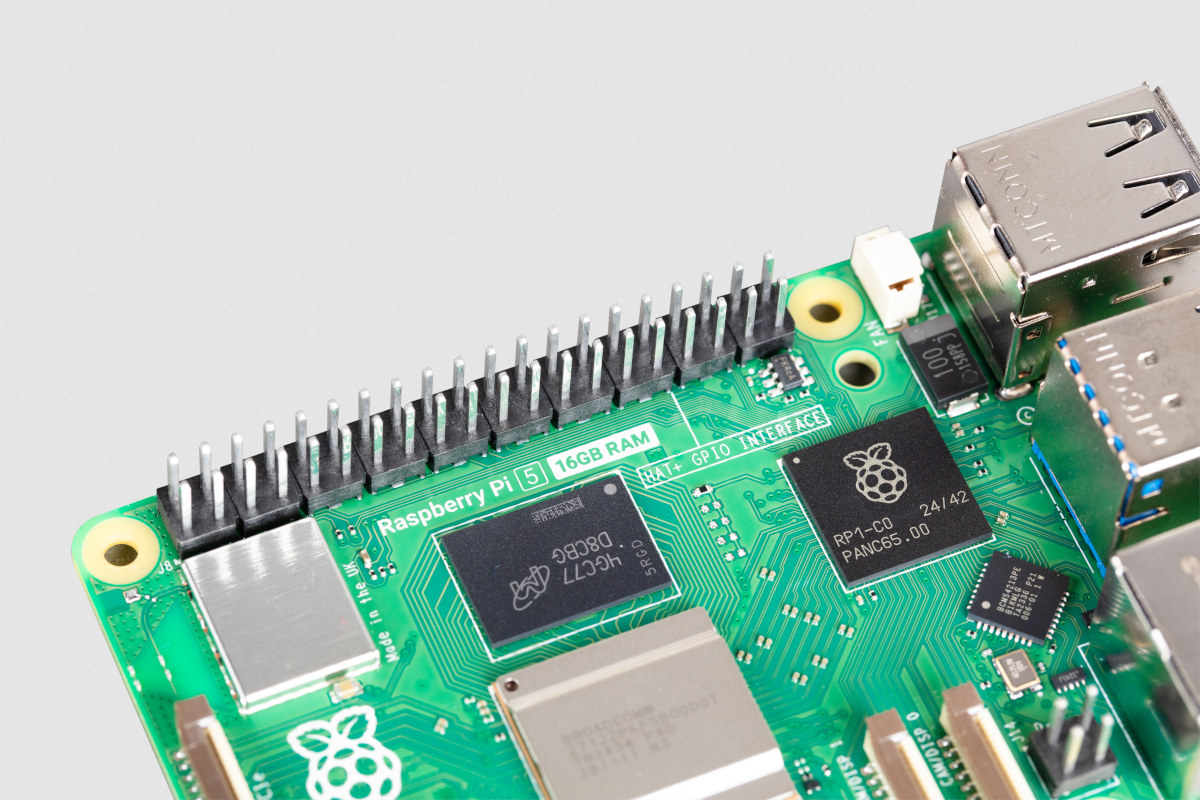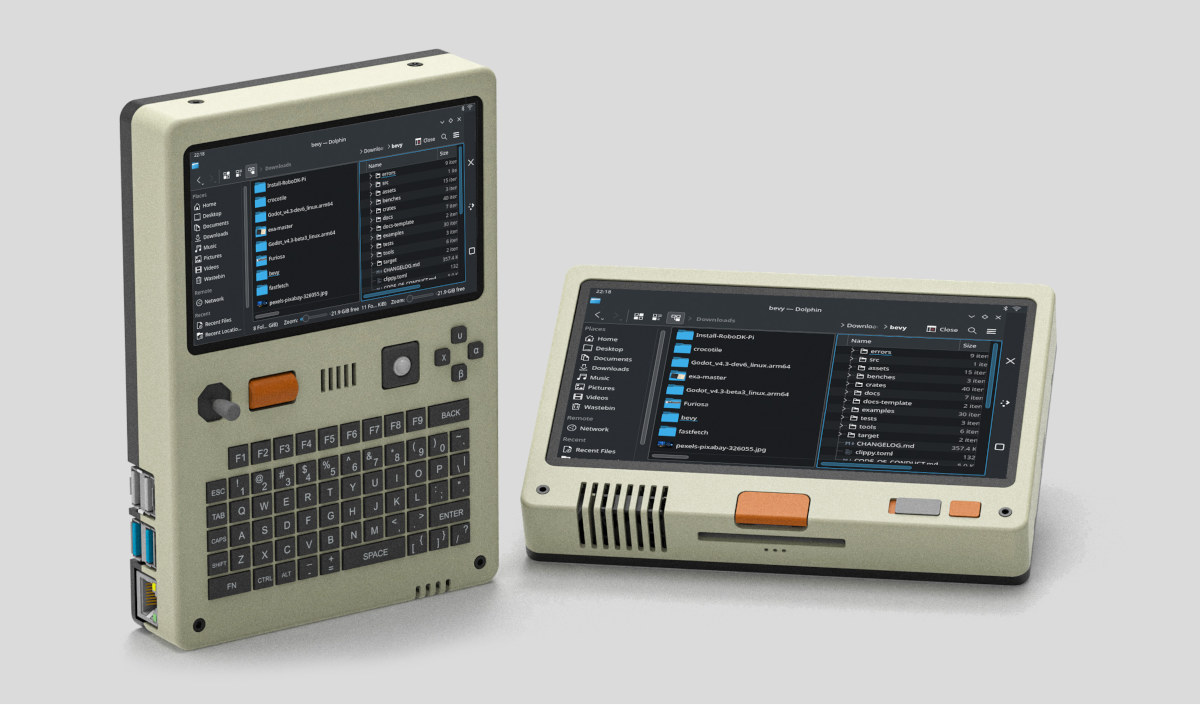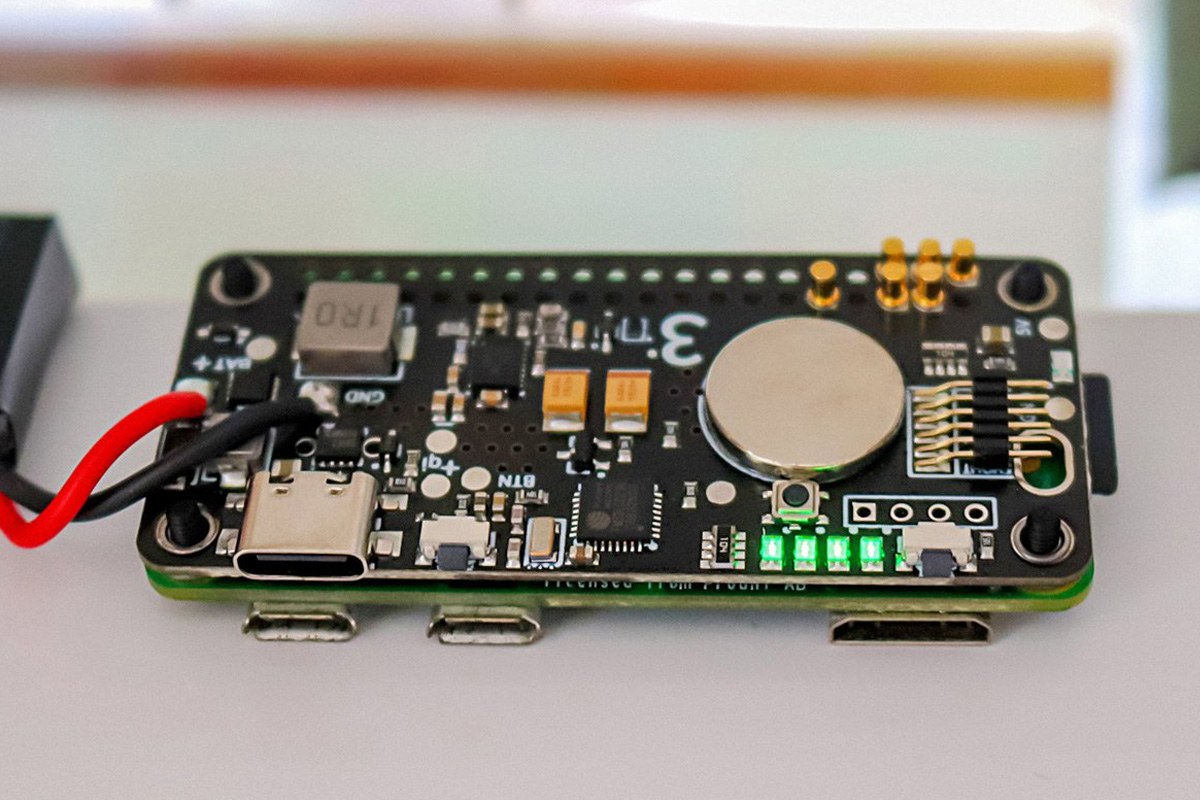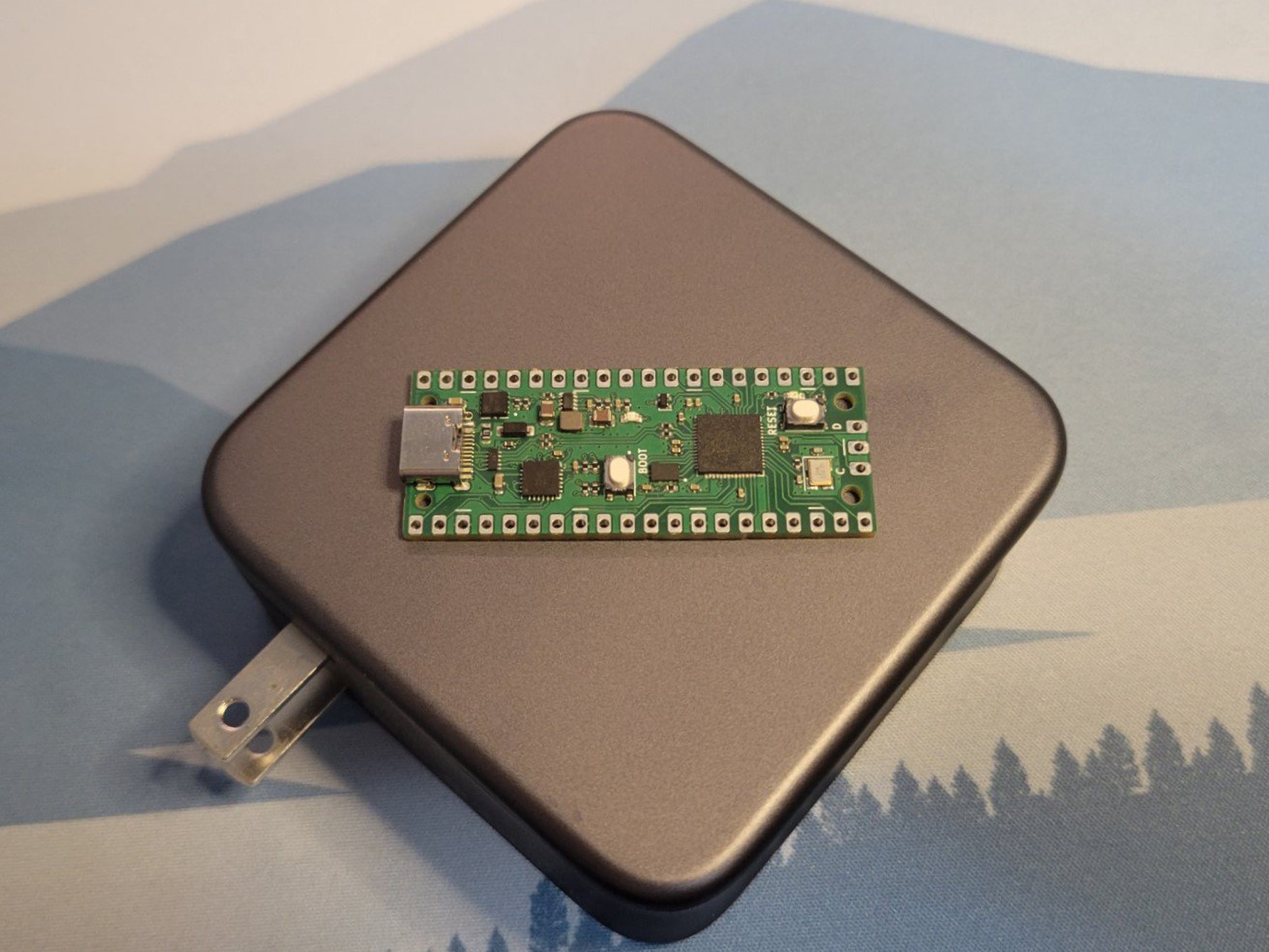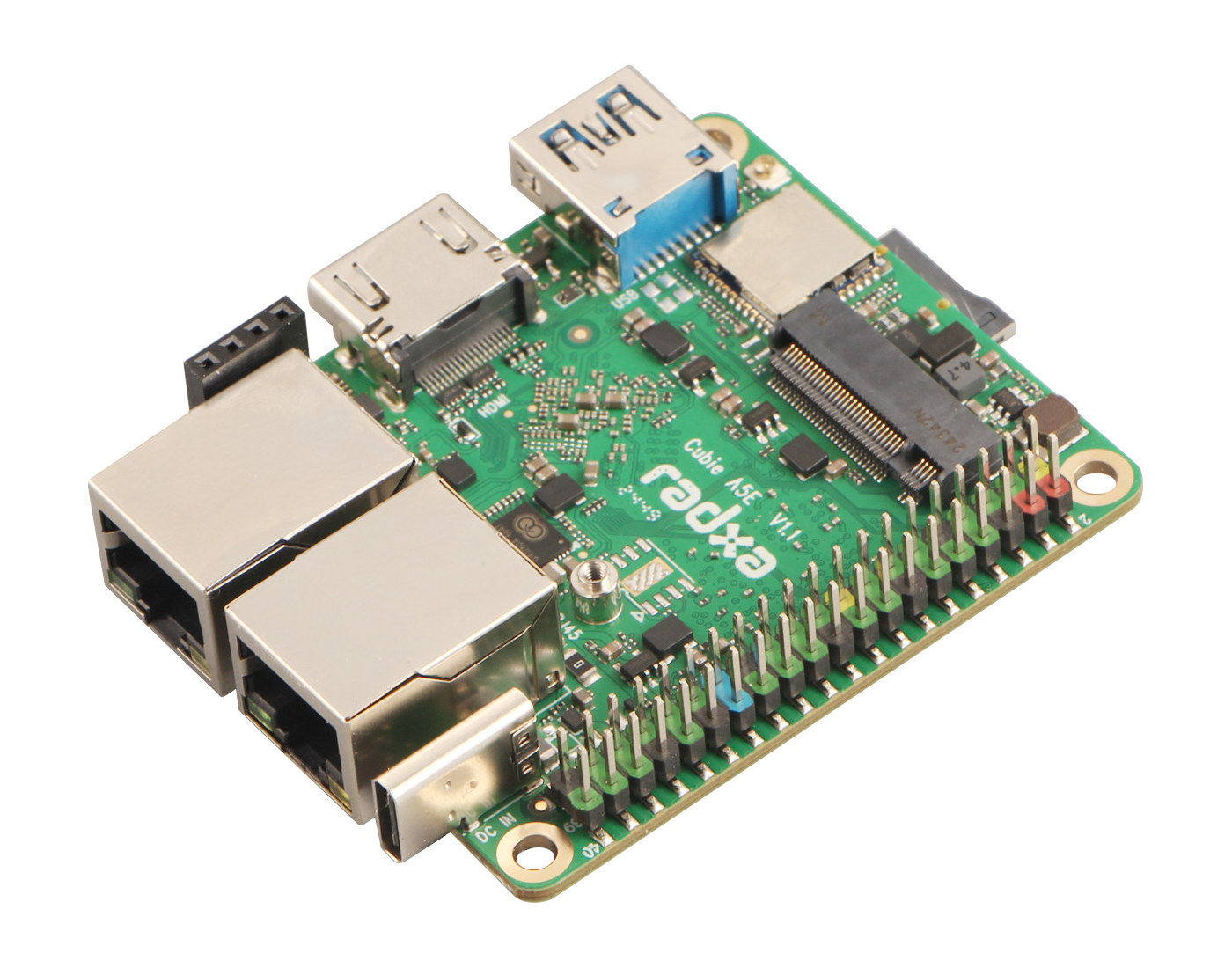Seeed Studio’s reComputer AI R2130-12 is an Edge AI computer with a Raspberry Pi 5 SBC with 8GB RAM and a Hailo-8 module with 26 TOPS of AI performance, suitable for video analytics, machine vision, and intelligent edge computing. The computer comes with a HAT+ with two M.2 sockets, one occupied by the Hailo-8 AI accelerator and the other available for an M.2 NVMe SSD. In some ways, it’s just a nicely packaged Raspberry Pi 5 SBC with Hailo-8 AI accelerator that we reviewed last year. reComputer AI R2130-12 specifications: SBC – Raspberry Pi 5 with 8GB RAM AI Processor – Hailo-8 M.2 AI accelerator module with 26 TOPS Storage microSD card slot, with support for high-speed SDR104 mode Optional M.2 NVMe SSD via M.2 PCIe 3.0 slot Video Output – 2x micro HDMI ports up to 4Kp60 Camera/Display I/F – 2x 4-lane MIPI camera/display transceivers Networking Gigabit Ethernet RJ45 […]
Raspberry Pi 5 with 16GB RAM launched for $120
Considering the Raspberry Pi CM5 is available with up to 16GB RAM, it should come as no surprise that the Raspberry Pi 5 also got its own 16GB LPDDR4 RAM upgrade. But the extra memory does come at a premium since the new board sells for $120, a $40 markup compared to the Raspberry Pi 5 with 8GB RAM. The extra memory should bring the user experience closer to a desktop machine for browsing the web with multiple tabs, checking emails, watching YouTube videos, and more all at the same time. Besides multitasking, the 16GB RAM may also be beneficial when running generative AI workloads like LLMs and VLMs which are known to be memory-hungry. Raspberry Pi 5 16GB specifications: SoC – Broadcom BCM2712 “D0” stepping CPU – Quad-core Arm Cortex-A76 processor @ 2.4 GHz with crypto extensions, 512KB per-core L2 caches, 2MB shared L3 cache GPU – VideoCore VII […]
Pilet is a Raspberry Pi 5-powered modular, portable computer with 5-inch or 7-inch display, optional built-in keyboard (Crowdfunding)
Pilet is a modular, open-source hardware, portable computer designed for the Raspberry Pi 5 SBC, and equipped with a choice of displays, keyboards, and an optional battery module that can last for up to 7 hours. Two models are available: the Pilet 5 with a 5-inch display, an integrated keyboard, a trackball, a scroll wheel, a navigational switch (D-Pad), and game buttons, and the Pilet 7 with a larger 7-inch display and support for detachable modules such as a keyboard, gamepad, or deck. Pilet specifications: Supported SBC – Raspberry Pi 5 Storage – MicroSD card, NVMe SSD via module Display Pilet 5 – 5-inch IPS MIPI DSI display with 1280×800 resolution, capacitive touch screen. Pilet 7 – 7-inch IPS MIPI DSI display with 1280×800 resolution, capacitive touch screen. Video Output- 2x micro HDMI ports Networking Gigabit Ethernet RJ45 port 802.11ac WiFi 5 and Bluetooth 5.0 Optional LTE cellular via module […]
FOSDEM 2025 schedule – Embedded, Open Hardware, RISC-V, Edge AI, and more
FOSDEM 2025 will take place on February 1-2 with over 8000 developers meeting in Brussels to discuss open-source software & hardware projects. The free-to-attend (and participate) “Free and Open Source Software Developers’ European Meeting” grows every year, and in 2025 there will be 968 speakers, 930 events, and 74 tracks. Like every year since FOSDEM 2015 which had (only) 551 events, I’ll create a virtual schedule with sessions most relevant to the topics covered on CNX Software from the “Embedded, Mobile and Automotive” and “Open Hardware and CAD/CAM” devrooms, but also other devrooms including “RISC-V”, “FOSS Mobile Devices”, “Low-level AI Engineering and Hacking”, among others. FOSDEM 2025 Day 1 – Saturday 1 10:30 – 11:10 – RISC-V Hardware – Where are we? by Emil Renner Berthing I’ll talk about the current landscape of available RISC-V hardware powerful enough to run Linux and hopefully give a better overview of what to […]
PiSugar3 is a low-cost Raspberry Pi UPS module with RTC, hardware battery protection, and power management features
PiSugar Kitchen’s PiSugar3 is a compact Raspberry Pi UPS module with integrated power management features that make Raspberry Pi Zero boards portable. This new module is an upgraded version of the PiSugar S and PiSugar S Pro, which we previously wrote about. The PiSugar S features a compact 1,200mAh battery for Raspberry Pi Zero, and the PiSugar S Pro comes with a 5,000mAh battery for Raspberry Pi 3/4. The PiSugar3 adds new features to these models with upgrades including an RTC, and a fully functional UPS functionality with customizable wake-up options. It also includes an anti-mistaken touch switch to avoid accidental shutdowns, a software watchdog, and hardware battery protection to extend battery longevity. The UPS module gets attached to the bottom of the Pi and there are pogo pins on the UPS module that deliver the power while the GPIO pins of the Pi remain free for other tasks, on top […]
PicoPD Pro – An open-source RP2040 development board with USB PD support up to 30V
The PicoPD Pro is an open-source Raspberry Pi RP2040 development board that integrates USB PD support up to 30V, and features like voltage negotiation and power delivery while still retaining the Raspberry Pi Pico functionality. It features the AP33772S USB-C PD3.1 sink controller from Diodes Incorporated. The AP33772S supports the full USB-C PD 3.1 specification, including Extended Power Range (EPR) / Adjustable Voltage Supply (AVS) up to 28V and Programmable Power Supply (PPS) up to 21V. The PicoPD Pro USB PPS/AVS development board is ideal for powering devices with specific requirements, such as motor control boards, LED drivers, custom battery chargers, and other high-power applications. It also features a 5V rail output for less demanding applications. It can also be used as an AP33772S evaluation board. We have previously seen other USB-C PD solutions like the Spark Analyzer, YULC LED Controller, and USB Insight Hub which may serve a similar […]
Radxa Cubie A5E – A compact Allwinner A527/T527 SBC with HDMI 2.0, dual GbE, WiFi 6, Bluetooth 5.4
Radxa Cubie A5E is an SBC powered by Allwinner A527/T527 octa-core Cortex-A55 SoC and featuring HDMI 2.0, dual GbE, WiFi 6 and Bluetooth 5.4, an M.2 socket for NVMe SSD, USB 3.0 Type-A and USB 2.0 OTG (Type-C) ports, and a 40-pin GPIO form factor in a compact 69x56mm form factor. Long-time readers may remember the Allwinner A10-powered Cubieboard launched in 2012 as an alternative to the hard-to-get Raspberry Pi development board or the various TV boxes like the MeLE A1000 we tried to use to run Linux on Arm hardware. At the time, Allwinner SoCs became popular in SBCs but the company management eventually failed to deliver on software, so some members of CubieTech decided to split and founded Radxa to design Rockchip SBCs that looked more promising in terms of software support. It eventually ended up being a good move after a few difficult first years. However, Allwinner […]
EDATEC ED-SBC3300 is an industrial mini-ITX motherboard for the Raspberry Pi CM5
EDATEC ED-SBC3300 is an industrial mini-ITX motherboard designed for the Raspberry Pi CM5 with plenty of ports and headers including HDMI 2.1 and LVDS display interfaces, seven USB 3.0/2.0 interfaces, up to two Gigabit Ethernet ports, a mini PCIe slot for 4G LTE cellular connectivity, RS232 and RS485 interfaces, and more. Like many Raspberry Pi CM5 hardware platforms, the EDATEC ED-SBC3300 mini-ITX motherboard is not exactly new since it’s basically the same as the EDATEC ED-SBC2300 Raspberry Pi CM4-powered industrial Mini-ITX motherboard, but fitted with a Raspberry Pi CM5 instead. Let’s still have a look at the specifications to see if anything has changed. EDATEC ED-SBC3300 specifications: SKUs – EDATEC ED-SBC3300 series – ED-SBC3310, ED-SBC3311, ED-SBC3320, and ED-SBC3321 SoM – Raspberry Pi CM5 SoC – Broadcom BCM2712 CPU – Quad-core 64-bit Arm Cortex-A76 processor @ 2.4GHz GPU – VideoCore VII GPU with support for OpenGL ES 3.1 graphics, Vulkan 1.2 […]



